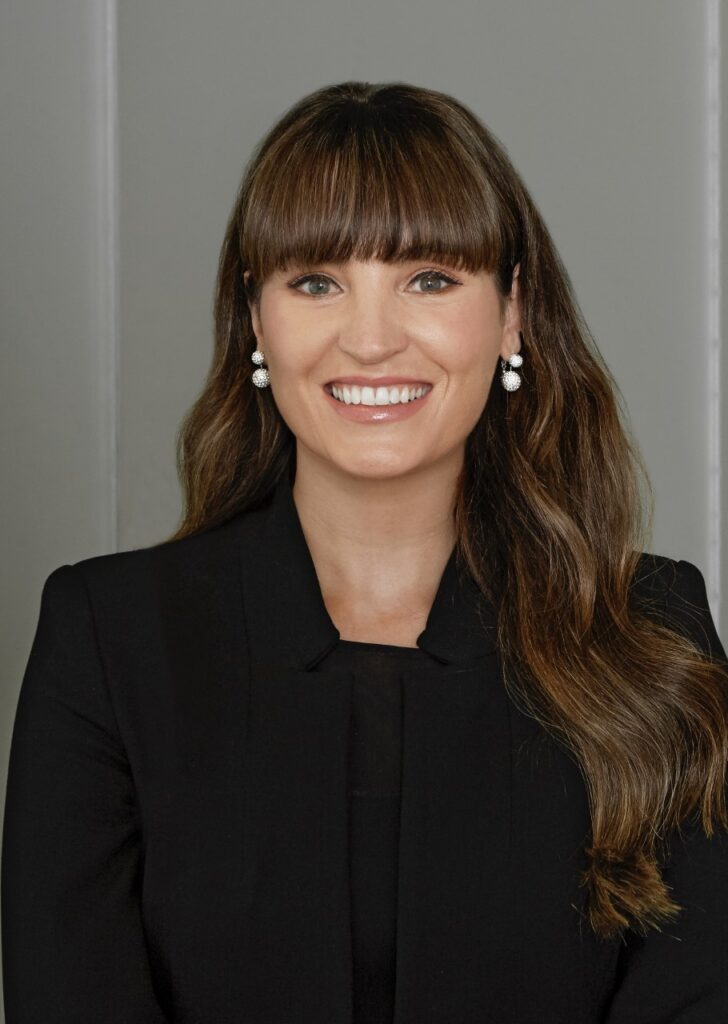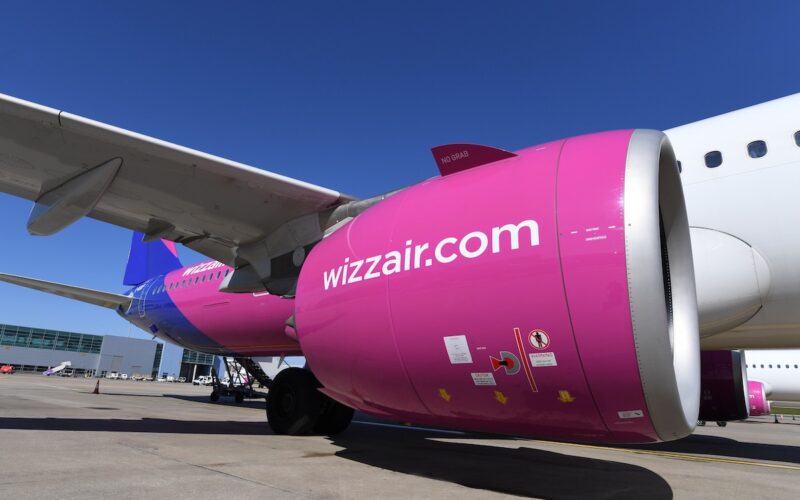If there is an attribute that defines Wizz Air that is obsession with efficiency and this, as we shall soon see, has also some positive derivatives when it comes to its environmental footprint.
In June 2023, Wizz Air was awarded the title of ‘Most Sustainable Low-Cost Airline’ at the World Finance Sustainability Awards 2023 for the third year in a row.
The award follows other forms of recognition received by the Central and Eastern European low-cost carrier in this field, including CAPA’s Global and EMEA Environmental Sustainability Airline Group of the Year in 2022.
It is no secret that Wizz Air’s fleet investment program plays a major role in boosting the airline’s sustainability credentials. In addition to the fuel efficiency of Wizz Air’s state-of-the-art fleet, the Airbus A321neo aircraft joining its fleet are fitted with high-density cabins seating 239 passengers and will allow the airline to claim a lower per passenger carbon footprint than many other major airlines.
This aspect of Wizz Air’s operations was highlighted by its chief executive officer, Joszef Várady, told AeroTime during a recent Executive Spotlight interview. However, this is just one part of Wizz Air’s comprehensive sustainability agenda.
In an in-depth interview with AeroTime, Yvonne Moynihan, Corporate and ESG Officer at Wizz Air Group, discussed the airline’s sustainability strategy, the different initiatives it is pursuing in this field, and the milestones ahead.
Moynihan is an experienced airline executive who, before joining Wizz Air in July 2022, was General Counsel and Board Secretary at Vueling, IAG’s Barcelona-based low-cost airline. Prior to that she worked as legal counsel for Ryanair.

Now based out of Wizz Air’s headquarters in Budapest, Hungary, Moynihan oversees the airline’s numerous Environmental, Social and Governance (ESG) projects, which tend to be, by design, cross-functional and pervade each area of the company.
“ESG is an embedded function within Wizz Air, and this is the whole point of the strategy: that we embed sustainability in every aspect of the business,” Moynihan continued. “It is not only a separate team, but everybody is involved in some way, be it finance, procurement, operations, or any other department.”
Built-in efficiency
The core sustainability metric Wizz Air pays the most attention to is CO2 per passenger per kilometer, a measure of carbon intensity. This is an indicator that most airlines monitor and one in which Wizz Air, according to its latest annual report for the year up to 31 March 2023, has the edge over its competitors at 53.8g per passenger per km.
Moynihan explained: “The more we renew the fleet, the better this indicator gets, and this is thanks to the efficiency of the Airbus A321neo, which reduces fuel burn significantly. And we also have 239 seats onboard which is more than on the MAX [Boeing 737 MAX, an aircraft flown, among others, by Wizz’s major rival Ryanair – ed. note].”
Carbon intensity is not just a vanity metric, it is also embedded in executive remuneration, with management pay partly linked to hitting certain ESG key performance indicators (KPIs), with Deloitte verifying the airline’s carbon intensity and total greenhouse gas emissions.
This is not the only metric that Moynihan has in mind right now. She also explained that in addition to the reporting required by the EU Emissions Trading System, the ETS, Wizz Air, alongside other airlines, also committed to align its decarbonization goals with the Science Based Target Initiative (SBTi) in 2021. This means Wizz Air is now working on setting a number of carbon intensity targets that will have to be validated before the end of 2023.
Wizz Air’s sustainability strategy centers on three different time horizons: short, medium, and long term, with the approach to each dictated by the technology available.
The short-term plan is to continue reducing the airline’s carbon intensity via the fleet renewal program as well as through other initiatives to fly more efficiently and emit less carbon per passenger and kilometer flown. Wizz Air aims to decrease the grams of carbon emitted per passenger per kilometer from 53.8g reported in the fiscal year 2023 to 42.6 by 2030.
Moynihan explained at the time of our conversation that Wizz Air has identified approximately 40 different fuel saving initiatives, involving several operational areas, including flight planning and ground operations.
When it comes to the long term, Moynihan is clear: hydrogen is the answer.
She revealed that Wizz Air is onboard with the Airbus ZEROe project, the European manufacturer’s plan to launch a family of hydrogen-powered aircraft by 2035. Wizz Air plays a consultative role in the project, helping Airbus map out the requirements such hydrogen-powered aircraft would need to have if they are to replace the current generation of airliners.
Wizz is also active in another separate project called the Alliance for Zero Emission Aviation (AZEA), a pan-European public-private initiative aimed at facilitating the roll-out of hydrogen infrastructure for the aviation sector in Europe.
However, Moynihan is under no illusion about the magnitude of the challenge ahead.
“Hydrogen is obviously very far off right now, so we need to bridge the gap,” she noted.
Betting on SAF
And it is at this point, the medium term, when sustainable aviation fuel (SAF) comes into play.
“We’ve got a very clear SAF strategy, and we have taken a portfolio approach,” she explained. “First, we have offtake agreements with a number of major SAF suppliers, energy companies, such as Neste, Cepsa and OMV in order to secure SAF supplies in the future. But also, because of supply limitations, we have taken a bit of an approach that is a bit different to that of our competitors: we have recently announced two equity investments in the SAF space.”
Here, Moynihan is referring to investments Wizz Air has made in two separate Sustainable Aviation Fuel (SAF) production projects.
“We intend to get cost and supply benefits by securing an investment. This is part of our portfolio approach,” she explained.
One of these projects is Firefly, a startup that plans to produce SAF in the United Kingdom using sewage sludge as feedstock.
The other investment is United States-based CleanJoule, another SAF production startup, which was made as part of a consortium including two other low-cost airlines of the Indigo Partners family, Volaris and Frontier. CleanJoule aims to produce SAF out of agricultural residues and waste biomass.
“It’s a project led by a bunch of very smart tech guys that have come up with a novel way to produce SAF. There is no plant yet, this is why we are investing,” Moynihan explained, emphasizing the prospective nature of this investment.
She added: “We are doubling down on making sure we are not going to be restricted by either cost or supply in the future and we will be able to meet the EU mandates that start coming into play in 2025. The first significant threshold is going to be 2% by 2025 and 6% by 2030, and we want to make sure we are ready. We want to be a first mover because we know that SAF will be in high demand in the near future.”
From speaking to Moynihan, it is clear that there is an acute awareness of the need to secure SAF supplies, yet, at the same time, there is much uncertainty around this within the industry.
“It’s hard to see in the short-term what the fuel producers are doing. This is why we are talking to them. But there is still not much clarity about what the volumes are going to be,” Moynihan said, before moving on to compare the situation on both sides of the Atlantic. “In the US there are already significant production volumes because they’ve got lots of tax write-offs and incentives. And they don’t have mandates over there. Within the EU we have the stick approach.
“Now we are hoping that once the Net-Zero Industry Act [a package of measures approved by the EU Commission to support and promote clean technologies in the EU – ed. note] is out there, funding starts to filter and cascade through and that we are going to see a similar situation to that in America.”
Wizz Air is also lobbying the different national governments within the EU to advocate for national SAF strategies and to encourage governments to start planning for a ramping up of SAF supply. This includes looking at how SAF is going to be obtained and where is it going to come from if the industry is to comply with the EU mandate.”
However, Moynihan remains optimistic. “In a year’s time things will look a lot different and we are going to have a lot more certainty and clarity,” she said.
Regardless of whether governments have done their SAF supply homework or not, Wizz Air has already laid out its SAF procurement strategy up until 2030.
A holistic approach
There are other aspects of Wizz Air’s ESG and sustainability program that also merit attention. For example, non-carbon emissions will be tracked from 2025 and an internal program called Sustainability Ambassadors will enable Wizz Air staff to promote specific sustainability initiatives wherever they are based.
Waste management is also something that the airline takes care of, notably at its main base in Budapest, although Moynihan admitted that it is not always possible to implement the same standards and procedures everywhere across the airline’s extensive network.
Moynihan’s team is also looking at the environmental footprint of the airline’s suppliers. On this front, incomplete or fragmented data does not make things easy, but they carry on, nevertheless.
“There will be a new reporting directive soon and we want to be ahead of that,” she revealed.
One thing that does not figure in Wizz Air’s sustainability strategy is carbon offsetting.
While the airline offers the possibility of voluntarily offsetting flights through a company called CHOOOSE, Moynihan explained that Wizz “don’t have a huge intake, because we don’t offer it along the booking path”.
She continued: “It is something you can do voluntarily post-booking, but it is not something that we incorporate into our sustainability strategy.”
But what is the most significant challenge faced by airlines when advancing in the path of sustainability?
“SAF is a challenge because of the limitations there are now in the market, its cost and supply,” Moynihan explained. “The fact that SAF is still two to three times more expensive is a huge concern for us because we are an ultra-low-cost carrier.
“Ours is a cost game and we need to know what costs are in order to price our tickets. So, cost is super important to us. Uncertainty makes this a big challenge.”
She added: “At the moment there is not enough SAF supply and there is lots of demand, so we are trying to get our hands on as much SAF as we can.”
Then there is, of course, the inevitable question regarding claims posited by climate activists that airlines are systematically engaging in greenwashing practices.
However, Moynihan’s answer is sharp and straightforward. “We don’t fear being accused of greenwashing because we rely on facts,” she said. “We rely [on] and get our information from consumers. We are very driven by what the consumer sentiment is and how they feel about our strategy in sustainability.”
She continued: “We have the lowest emissions intensity within our industry in Europe. This is a fact. We don’t claim, as other airlines do, that we are responsible. What we say is, if you need to fly, then come fly with us, because we have the lowest carbon emissions intensity.”
But what about emissions levels? These are a huge point of concern for climate activists and low-cost airlines like Wizz Air are getting more people to fly.
“You need to balance this with the positives of travel. Travel is a force for good at the end of the day, for maintaining businesses, connectivity,” she said. “There’s always going to be those that are for and against flying.”

